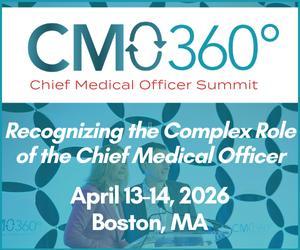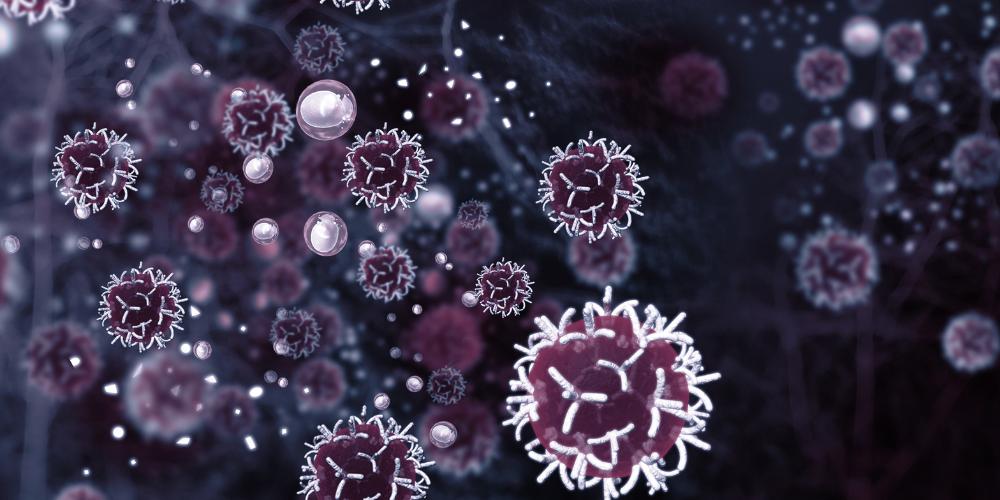Providing IO Options for Breast Cancer Patients
UCSF’s Dr Hope Rugo is dedicated to bringing IO options to breast cancer patients through research, examining bringing immunotherapy earlier in treatment and discovering ways to identify and work through immune toxicity to keep patients on life-saving therapy.

What are you working on at UCSF, leveraging immunotherapy for breast cancer?
My work in immunology is focused on looking at the different drivers of cancer growth and resistance that drive either an active immune response or suppress the immune response.
One of the fascinating aspects of solid tumors is that as the tumor grows and metastasizes and develops more pathways of resistance, it further suppresses the host immune response. It's not just the treatment: it's the tumor itself that suppresses the immune response by hiding aspects that would stimulate the immune system of the cancer itself. For example, there are less immune markers as tumors progress, and there's less infiltrating cells that could help stimulate the immune response.
Your work is bringing immunotherapy into earlier settings. How did you start this research?
We’ve been working on the I-SPY2 neoadjuvant regimen – a series of neoadjuvant treatments – to study checkpoint inhibitors early in the course of treatment. We started out with studying immunotherapy in the metastatic setting and understanding that the treatment didn't work as well as cancer progressed, because of down-regulation of the host immune response and then development of too many other mechanisms of resistance. So having treatment in the early stage setting and understanding that immunotherapy works better in the early stage setting has been a big advance.
My colleagues in the laboratory were able to identify a gene signature that is being explored as a predictor of immunotherapy cancer response using pathologic complete response as an indicator of a treatment response. Our studies in the early stage setting in the I-SPY2 trial found some of the first data on improved pathologic complete response in a subset of patients with hormone receptor-positive disease. That data drove the development of neoadjuvant trials, which recently reported positive data.
"We're looking to see what the optimal duration of immunotherapy is in the patients who've had a great response to immunotherapy and have had a pathologic complete response. One way to avoid giving more immunotherapy than needed is to look at the response in the neoadjuvant setting and stop treatment earlier in patients who have evidence by imaging and biopsy that there's no residual cancer."
What are your overall goals in your neoadjuvant work?
Overall, we're looking to see what the optimal duration of immunotherapy is in the patients who've had a great response to immunotherapy and have had a pathologic complete response. One way to avoid giving more immunotherapy than needed is to look at the response in the neoadjuvant setting and stop treatment earlier in patients who have evidence by imaging and biopsy that there's no residual cancer. In that way, we could individualize the intensity and type of treatment for the patient's own response to treatment.
We're also trying to look at patients who didn't have a pathologic complete response to add in antibody drug conjugates along with immunotherapy to try and see if we can improve outcome in those patients. We also need to escalate treatment for patients who have a poor response.
A focus of your work is on reducing toxicities. How does that connect to your research bringing IO earlier into treatment?
We've been interested in understanding which patients are at risk for developing late immune toxicity, to understand how to recognize who is at risk and how to treat them. That's particularly important in the early stage setting, for patients who have completed their immunotherapy but later turn up with serious or life-threatening toxicities.
It may be that some of the toxicities result in a more active surveillance system for cancer so that the patient has reduced recurrence. We haven't shown that in the early stage setting, but it’s an interesting area in the metastatic setting. In our metastatic breast cancer trial studying the combination of pembrolizumab with chemotherapy, we found that the treatment may be more effective in patients who have some degree of immune toxicity, as an indicator of the host immune response.
"We've been interested in understanding which patients are at risk for developing late immune toxicity, to understand how to recognize who is at risk and how to treat them. That's particularly important in the early stage setting, for patients who have completed their immunotherapy but later turn up with serious or life-threatening toxicities."
What is the impact of your work studying toxicities?
We presented some data and it did appear, again, with a retrospective subset analysis that patients who had immune toxicities also seemed to do better in terms of progression-free survival. That’s an area of active exploration that will need to be addressed in the early stage setting.
We've also been able to show that although there's more overall immune toxicity when you combine immunotherapy with chemotherapy, combining immunotherapy with different agents doesn’t alter that immune toxicity, but after you stop the chemotherapy, you actually have less immune-related events.
What’s next for your work?
One area of big unmet need in the metastatic setting is understanding these completely treatment-resistant cancers. The biggest area of interest is trying to combine immunotherapy with different targeted agents, such as antibody-drug conjugates, and other promising agents that could enhance the immune response in patients whose tumors are more immunologically cold. Moving forward, we're going to see more neoadjuvant data and a lot of data on trying to individualize treatment to the individual patient's response and then to optimize treatment in the patients who have a poor response to therapy.
One emerging area in our biomarker work is circulating tumor DNA. We’ve done early work in the neoadjuvant setting and are looking in the adjuvant setting as well. It’s an exciting next step to think that we could determine how the tumor is responding and what the right treatment is by looking at markers in the blood.
"One emerging area in our biomarker work is circulating tumor DNA. We’ve done early work in the neoadjuvant setting and are looking in the adjuvant setting as well."
Can you expand on how you’re utilizing ADCs to modulate the tumor microenvironment?
We're very excited about antibody-drug conjugates as a new way to deliver toxins. The efficacy that we've seen across different tumor subsets in breast cancer and in other tumors for antibody drug conjugates has been very exciting. Combining immunotherapy to antibody-drug conjugates is an exciting area because the ADC is already modulating the tumor microenvironment, so you can enhance that with these combinations.
This dates back to the days when we first started using trastuzumab for HER-2 positive cancers and understood that patients had a marked improvement in progression-free survival, but they had a bigger improvement in overall survival than they had in disease control. Our earliest understanding was that you could change antibody-dependent cellular cytotoxicity. We've seen now that it goes beyond just HER-2-targeted antibodies and that other antibodies can also have this effect – you actually improve survival more than you improve the duration of disease control, clearly changing the way the tumor responds to other treatments subsequently as well.
ADCs are changing the host immune response to the tumor, but the mechanisms of how that's being done are not well-understood. Resistance still seems to take a very much traditional path that we understand well. We know that resistance to antibody-drug conjugates is due to multiple mechanisms. Recent work has shown there is downregulation of the receptor that the antibody targets and the standard resistance to the payload. Therefore, you would need to combine immunotherapy with antibody-drug conjugates before those mechanisms of resistance develop.
What are you looking forward to in the field?
First, I’m interested in data focused on adding immunotherapy to high-risk hormone receptor-positive disease. It is fascinating because for all that we're talking about biomarkers, these trials selected patients solely on clinical pathologic characteristics: more cancer in the curable stage and Grade 3 histology. They showed an improved pathologic complete response.
Therefore, what's down the pike is showing improved event free survival in those patients with high risk hormone receptor positive disease and understanding how this interacts with hormone therapy, which is critical because that doesn't translate into clinical practice yet.
The second is optimizing the biomarkers that predict response. Going back to our work in biomarkers, we have the gene signature that was developed by investigators within I-SPY. It will be fascinating to apply prospectively to the patients who are getting treated now in order to better understand who responds to treatment and who doesn't.
And in general, we do a better job at positive predictors rather than negative predictors. There is a huge unmet need for patients who have the biomarkers that predict poor response. That's a big area of focus, and we have to try to enhance the immune response.










